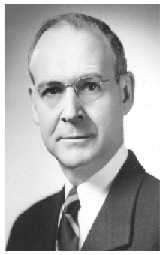Charles Glen King
| Charles Glen King | |
|---|---|
 Charles Glen King | |
| Born |
October 22, 1896 Entiat, Washington, U.S. |
| Died | January 23, 1988 (aged 91) |
| Residence |
|
| Nationality |
|
| Fields | Biochemist |
| Institutions | University of Pittsburgh, Columbia University |
| Alma mater | Washington State University, University of Pittsburgh |
| Known for | Nutritional research, discovery of Vitamin C |
| Notable awards |
John Scott Award Nicholas Appert Award (1955) |
Charles Glen King (October 22, 1896 – January 23, 1988) was an American biochemist who was a pioneer in the field of nutrition research and who isolated vitamin C at the same time as Albert Szent-Györgyi.[1] A biography of King states that many feel he deserves equal credit with Szent-Györgyi for the discovery of this vitamin.[2]
Life
King was born in Entiat, Washington to Charles Clement King and Mary Jane Bookwalter.[3] He entered Washington State University early, as his local one-room school did not have a twelfth grade. He was a Member of Lambda Chi Alpha. World War I interrupted his college studies, where he served in the 12th Infantry, a machine gun company. He did not receive his B.S. in chemistry until 1918. He immediately departed for the University of Pittsburgh, earning his M.S. in 1920 and Ph.D. in 1923. From the outset of his graduate studies, the nascent field of vitamins interested him. He remained in Pittsburgh as professor until 1942, when he left to become the first scientific director of the Nutrition Foundation, Inc., which worked to promote scientific and public health research, both in the U.S. and internationally.
King's contribution to the science of nutrition revolves around his isolation of vitamin C in 1931-1932 by studying the antiscorbic activities of guinea pigs with preparations from lemon juice. Albert Szent-Györgyi was conducting similar research at the University of Szeged in Hungary, focusing on hexuronic acid. The chemical identity of King's active substance was almost identical to Szent-Györgyi's hexuronic acid, but the research of S.S. Silva had declared the hexuronic acid was not vitamin C. However, within two weeks of each other in the spring of 1932, King first, and then Szent-Györgyi, published articles declaring that vitamin C and hexuronic acid were indeed the same compound. Szent-Györgyi would later win a Nobel Prize for his part in the discovery, and controversy remains over whether both men deserve equal credit. King later established the important functional role of vitamin B, and throughout his 40-year research career made many significant contributions in the areas of fats, enzymes and vitamins. King authored over 200 articles on good nutritional practices and the positive effects of vitamins.
Apart from his work with the Nutrition Foundation, King's public service activities involved creation of the USDA's Plant, Soil, and Nutrition Laboratory in Ithaca, NY. He helped establish the Food and Nutrition Board, dealing with food and nutrition problems in military and civilian populations, beginning in World War II and continuing through 1970. He also helped create the Food Protection Committee, the Recommended Dietary Allowances, the Protein Advisory Group, and the International Union of Nutritional Sciences. He also served on the advisory council to the National Institute of Arthritis and Metabolic Diseases. King officially retired from the Nutrition Foundation in 1963, only to begin a second career as Associate Director of the Institute of Nutrition Sciences and a consultant to the Rockefeller Foundation.
References
- ↑ University of Pittsburgh Archived September 16, 2006, at the Wayback Machine. History 1932, Charles Glen King. "In recognition of this medical breakthrough, some scientists believe that King deserved a Nobel Prize." Accessed January 2007
- ↑ Stare, Fredrick J.; Stare, Irene M. (1988). "Charles Glen King, 1896–1988" (PDF). Journal of Nutrition. 118 (11): 1272–1277.
- ↑ http://jn.nutrition.org/content/118/11/1272.full.pdf
External links
- US National Library of Medicine Collection of Charles Glen King's papers and biography. Accessed January 2007
- Nobel Prize website The Nobel Prize and the Discovery of Vitamins by Kenneth J. Carpenter, June 22, 2004 see Section on Szent-Györgyi and Vitamin C. Accessed January 2007
- Charles Glen King, 1896 – 1988 A Biographical Memoir by John E Halver and Nevins Scrimshaw, National Academy Of Sciences Biographical Memoirs, Volume 88, Published 2006 (pdf) Accessed January 2007